The Black Obelisk Of Shalmaneser III – Great Assyrian Ruler
A. Sutherland - AncientPages.com - The Black Obelisk of Shalmaneser III is a limestone monument that celebrates thirty-one successful years of military campaigns by king Shalmaneser III and his prominent minister.
The Black Obelisk of Shalmaneser III, one of Assyria’s greatest treasures, was uncovered in 1854 by the British archaeologist Austen Henry Layard.
 The Black Obelisk of Shalmaneser III - Image credit: British Museum
The Black Obelisk of Shalmaneser III - Image credit: British Museum
A series of inscriptions on the obelisk are decorated with illustrations that show the ceremony of paying tribute to the king in person.
They are presented in five rows and each carved row has four panels, one on each side of the Black Obelisk. The scenes show king Shalmaneser III (858 – 824 BC) who is receiving tribute from vassals across the Assyrian empire.
The obelisk was created in 825 BC in a courtyard of the main building in Kalhu, the ancient Assyrian city of Kalhu (the Biblical Calah).
 The Black Obelisk of Shalmaneser III - Image credit: British Museum
The Black Obelisk of Shalmaneser III - Image credit: British Museum
At the time of the stela's creation, Kalhu was the capital of an Assyrian empire broken apart by civil war, so maybe it was intended to remind the king's supporters and followers of the extent of his authority and rule.
During the 9th century BC, Babylonia's neighbor Assyria enjoyed a revival of political power but abstained from encroaching on the rights of Babylonia.
In those times, Assyria had a temporary period of weakness while Babylonia was much stronger as power.
However, it is important to mention that king Shalmaneser III was the son of the famous Ashurnarsipal II, one of the great builders in Assyrian history, who took over Calah (Kalhu), and by a large construction program, he completely transformed the city to the leading metropolis in Assyria.
 The Black Obelisk of Shalmaneser III - Image credit: British Museum
The Black Obelisk of Shalmaneser III - Image credit: British Museum
King of Assyria (reigned 858–824 BC) and flourished 9th century BC and was associated with military expansion involving many campaigns on the southern and eastern frontiers.
However, his main goal was to conquer North Syria. His progress was slow though he tried to be efficient and successful. In 853 BC he fought a coalition formed by the kings of Hamath, Israel, and Damascus, but his results were indecisive. Then, in 841 BC after failing to capture Damascus itself, his forces marched to the Mediterranean coast where he received tribute from Tyre, Sidon, and Samaria.
The "Black Obelisk” (from Nimrūd, now in the British Museum) depicts“Jehu, son of Omri” bows before Shalmaneser. By 832 Cilicia had been invaded, Tarsus captured, and the region made an Assyrian dependency.
Shalmaneser’s remaining campaigns were led against Sardur I and the Mannai. The king died in 824 BC, and civil war broke out between a son, Ashurdaninapal, and his heir, Shamshi-Adad V. Shalmaneser rebuilt a palace and ziggurat at Nimrud, and his military confrontations were commemorated both on palace reliefs there and on the gates of the temple at Balawat.
Balawat is today an archaeological site of the ancient Assyrian city of Imgur-Enlil, and a modern village in Nineveh Province (Iraq).
The Black Obelisk was rediscovered in 1846 and it is believed to be the most complete Assyrian obelisk yet found in archaeological excavations. The Assyrian treasure monument became a museum object in London and gained fame for depicting an Israelite king, Jehu, mentioned in the Christian Bible.
The obelisk's richly presented details enable us to imagine the power of the Assyrian empire in the west during Shalmaneser III’s long and very successful reign.
Written by – A. Sutherland AncientPages.com Staff Writer
Copyright © AncientPages.com All rights reserved. This material may not be published, broadcast, rewritten or redistributed in whole or part without the express written permission of AncientPages.com
More From Ancient Pages
-
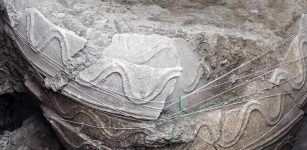 Bizarre Parthian Tomb Sheds Light On Ancient Life In Isfahan, Central Iran
Archaeology | Jun 25, 2020
Bizarre Parthian Tomb Sheds Light On Ancient Life In Isfahan, Central Iran
Archaeology | Jun 25, 2020 -
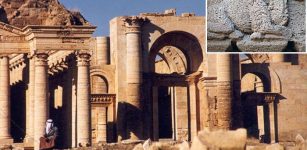 Hybrid Camels Revealed In Ancient Arab Temple Art At Hatra, Northern Iraq
Archaeology | Mar 15, 2022
Hybrid Camels Revealed In Ancient Arab Temple Art At Hatra, Northern Iraq
Archaeology | Mar 15, 2022 -
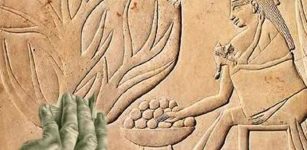 Being Left-Handed Was A Sign Of Evil Until Only Recently
Ancient History Facts | Jun 29, 2018
Being Left-Handed Was A Sign Of Evil Until Only Recently
Ancient History Facts | Jun 29, 2018 -
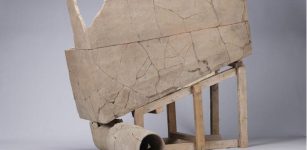 2,400-Year-Old Flush Toilet Discovered In China
Archaeology | Feb 24, 2023
2,400-Year-Old Flush Toilet Discovered In China
Archaeology | Feb 24, 2023 -
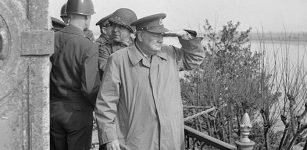 On This Day In History: Britain’s Greatest War-Time Leader Winston Churchill Died In London – On Jan 24, 1965
News | Jan 24, 2017
On This Day In History: Britain’s Greatest War-Time Leader Winston Churchill Died In London – On Jan 24, 1965
News | Jan 24, 2017 -
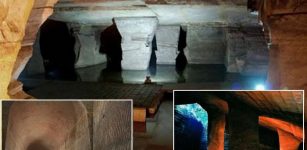 Underground Man-Made Longyou Grottoes Remain An Ancient Unsolved Mystery
Ancient Technology | Jan 16, 2019
Underground Man-Made Longyou Grottoes Remain An Ancient Unsolved Mystery
Ancient Technology | Jan 16, 2019 -
 Ancient Warming Event May Have Been Trigged By Changes In Earth’s Orbit
Archaeology | Dec 13, 2022
Ancient Warming Event May Have Been Trigged By Changes In Earth’s Orbit
Archaeology | Dec 13, 2022 -
 On This Day In History: Henry IV Is Crowned King Of France – On Feb 27, 1595
News | Feb 27, 2017
On This Day In History: Henry IV Is Crowned King Of France – On Feb 27, 1595
News | Feb 27, 2017 -
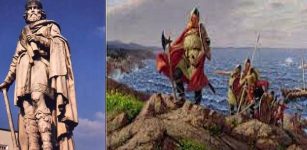 On This Day In History: Battle of Englefield Was Fought – On Dec 31, 870
News | Dec 31, 2016
On This Day In History: Battle of Englefield Was Fought – On Dec 31, 870
News | Dec 31, 2016 -
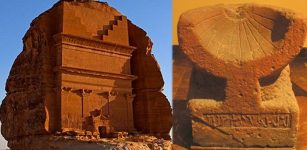 Mada’in Saleh: Spectacular Rock-Cut Tombs And Monuments Reflect Great Skills Of Nabataean Builders
Featured Stories | Aug 18, 2020
Mada’in Saleh: Spectacular Rock-Cut Tombs And Monuments Reflect Great Skills Of Nabataean Builders
Featured Stories | Aug 18, 2020 -
 ‘Collata Quipu’ May Explain Messages Hidden In Mysterious Writing Of Inca
Archaeology | May 10, 2017
‘Collata Quipu’ May Explain Messages Hidden In Mysterious Writing Of Inca
Archaeology | May 10, 2017 -
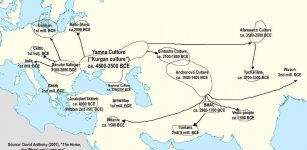 Mystery Of Ancient Language PIE From Which Half Of All Languages Originate
Featured Stories | Apr 3, 2017
Mystery Of Ancient Language PIE From Which Half Of All Languages Originate
Featured Stories | Apr 3, 2017 -
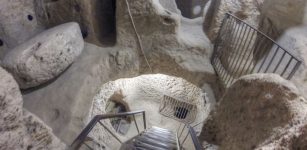 Impressive Kaymakli Underground City – An Ancient Hiding Place
Featured Stories | Mar 3, 2016
Impressive Kaymakli Underground City – An Ancient Hiding Place
Featured Stories | Mar 3, 2016 -
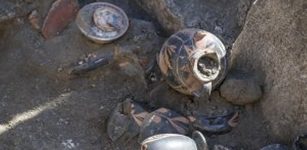 A Rare Pre-Roman Tomb Unearthed In Pompeii
News | Sep 22, 2015
A Rare Pre-Roman Tomb Unearthed In Pompeii
News | Sep 22, 2015 -
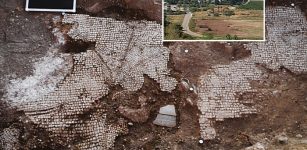 Ancient Colorful Nile-Scene Mosaics, Plastered Walls, Water Cistern Unearthed On The Shore Of The Sea Of Galilee
Archaeology | Sep 27, 2022
Ancient Colorful Nile-Scene Mosaics, Plastered Walls, Water Cistern Unearthed On The Shore Of The Sea Of Galilee
Archaeology | Sep 27, 2022 -
 Strange Ancient Accounts Of Fourth Dimensional Phenomena
Featured Stories | Jun 7, 2018
Strange Ancient Accounts Of Fourth Dimensional Phenomena
Featured Stories | Jun 7, 2018 -
 Legend Of Fintan Mac Bochra Who Escaped The Great Flood And Became The First Man In Ireland
Featured Stories | Aug 26, 2021
Legend Of Fintan Mac Bochra Who Escaped The Great Flood And Became The First Man In Ireland
Featured Stories | Aug 26, 2021 -
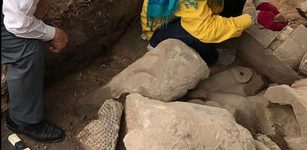 Buddha Statues With Broken Arms, Legs And Without Heads Unearthed In Angkor Wat, Cambodia
Archaeology | Apr 22, 2020
Buddha Statues With Broken Arms, Legs And Without Heads Unearthed In Angkor Wat, Cambodia
Archaeology | Apr 22, 2020 -
 Baby God Hermes Started His Life As A Liar And Trickster
Featured Stories | Dec 25, 2020
Baby God Hermes Started His Life As A Liar And Trickster
Featured Stories | Dec 25, 2020 -
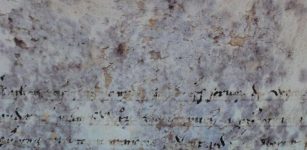 Part Of Secret Vatican Manuscript Decoded
Archaeology | Sep 7, 2017
Part Of Secret Vatican Manuscript Decoded
Archaeology | Sep 7, 2017

